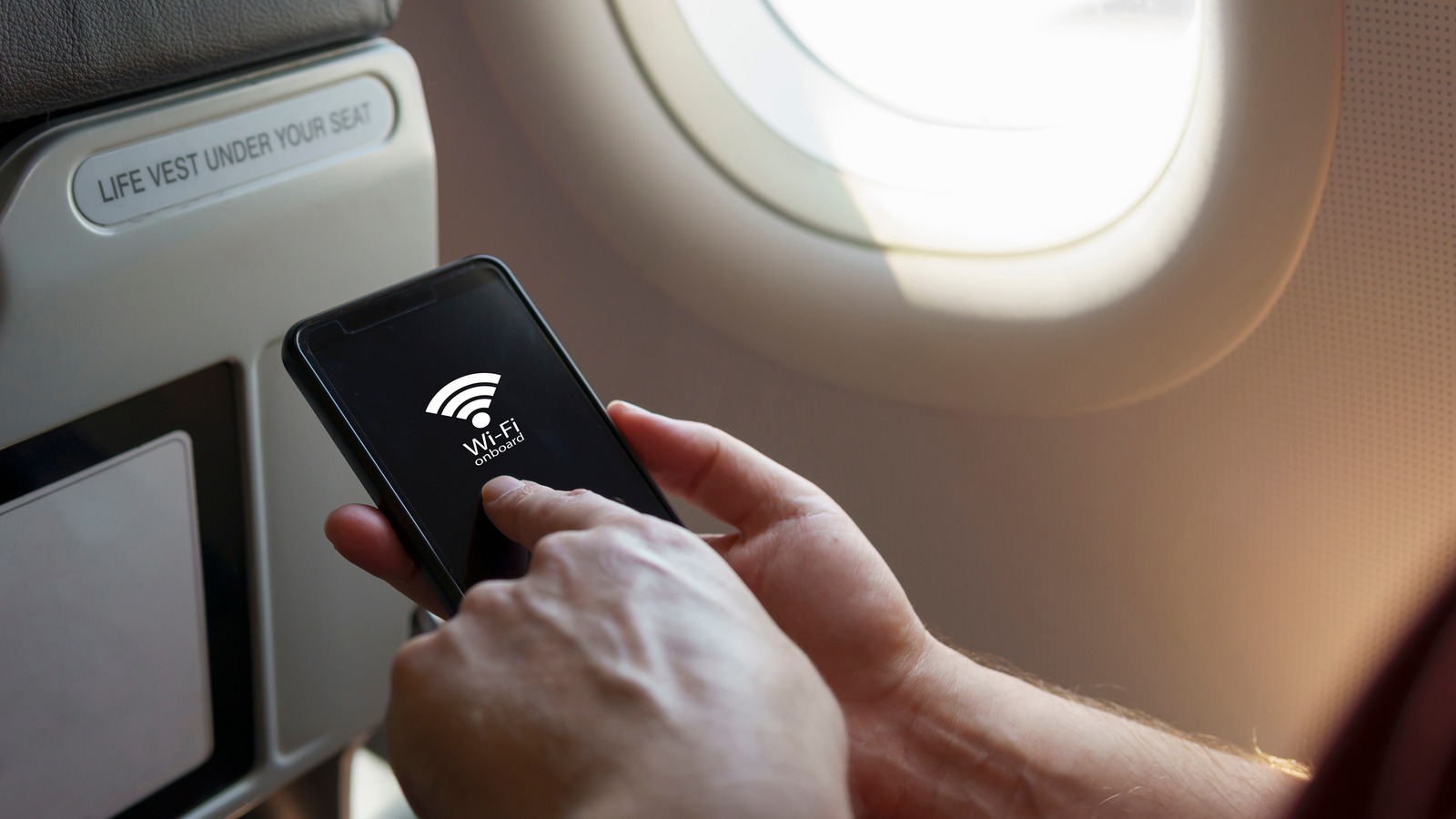
It should come as no surprise that in-flight Wi-Fi is considerably slower than the internet speeds we’ve all grown used to in our homes. When measuring internet speed, both download and upload speeds need to be taken into consideration. However, for the purpose of in-flight Wi-Fi connections, you will mostly care about downloading, which covers how fast websites are to load, how fast you’re downloading files, and whether streaming apps and games work smoothly.
According to Speedtest, the median download speed in the United States is at around 80 Mbps for mobile connections, and 195 Mbps for fixed broadband. These speeds vary based on location and internet service provider (ISP). Unfortunately, in-flight Wi-Fi is incapable of reaching these averages most of the time.
Even if the plane receives a speed of around 100 to 300 Mbps, that doesn’t translate to the speed you’ll be seeing on your device. This is because that bandwidth is split among all the passengers who are trying to use in-flight Wi-Fi, so you might be left with very little if many other passengers are attempting to connect.
Some ATG connections offer extremely low speeds along the lines of 3-10 Mbps, but a satellite connection can usually provide 10-20 Mbps for a basic package, and even up to 80 Mbps. Basic packages are cheaper, so to get to that higher threshold, you may need to spend a hefty amount.
It’s also important to note that in-flight Wi-Fi can be spotty, and even with a satellite connection, you may get disconnected or see massive drops in connection speed frequently. The weather, your current location, and the aircraft itself all play a part in how reliable the Wi-Fi can be.
Stay connected with us on social media platform for instant update click here to join our Twitter, & Facebook
We are now on Telegram. Click here to join our channel (@TechiUpdate) and stay updated with the latest Technology headlines.
For all the latest Gaming News Click Here
